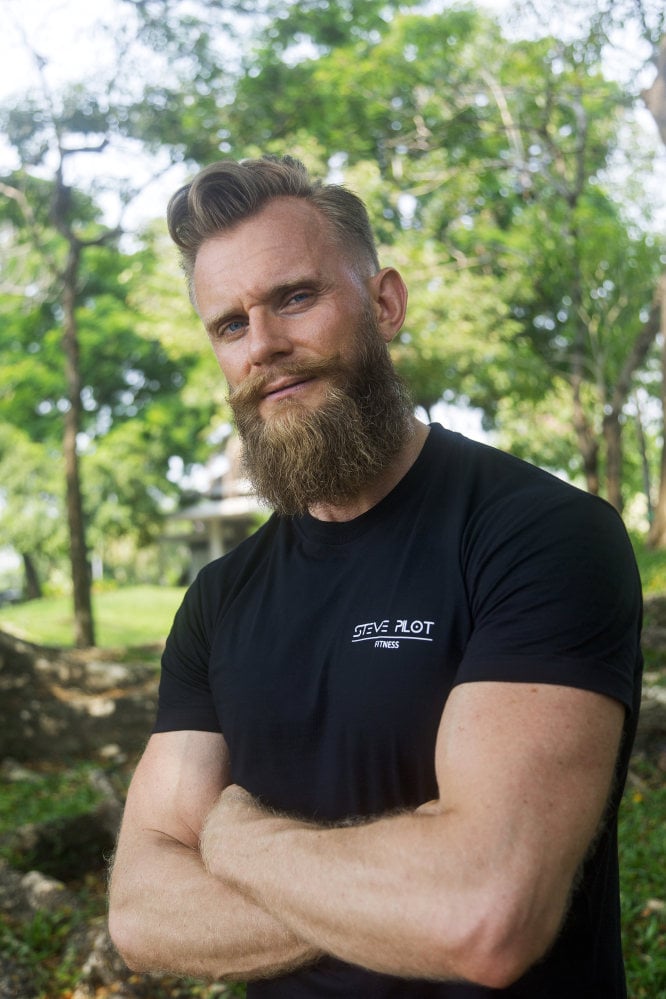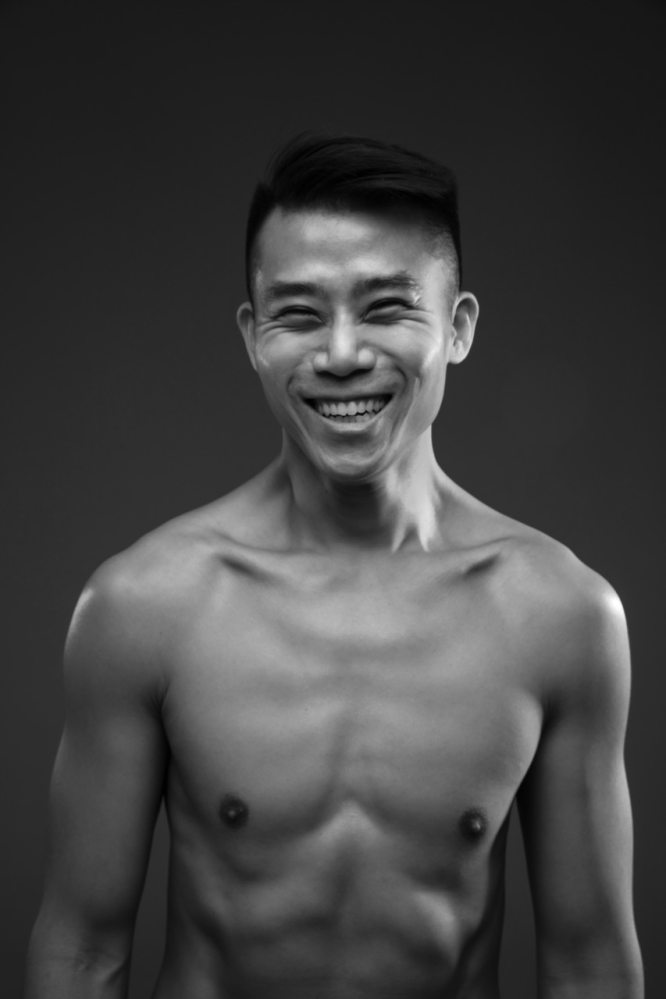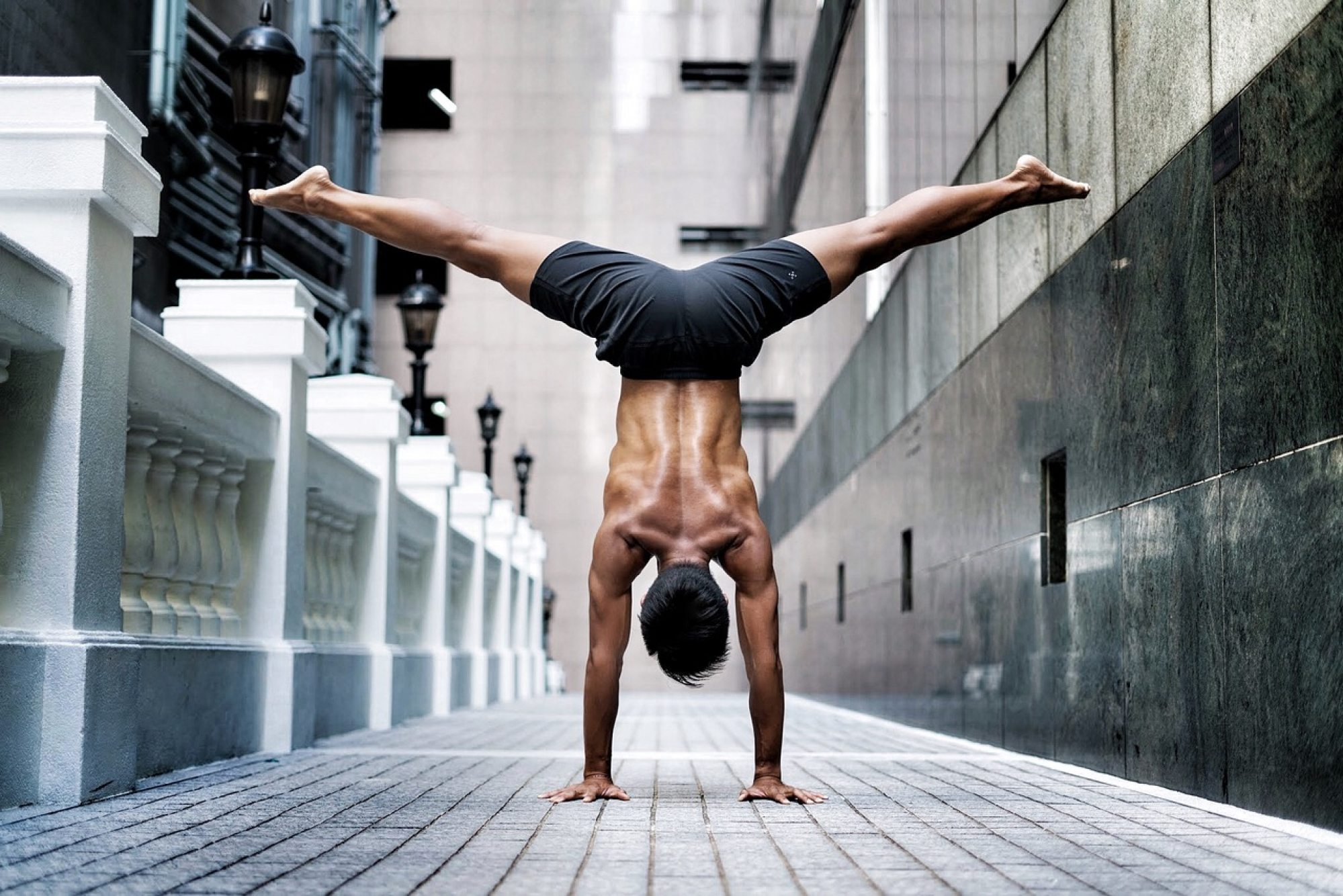
Handstands – their health and fitness benefits for you, from improved core strength to inner peace
- Handstands are a liberating and health improving mix of yoga and exercise, say fitness coaches Steve Pilot and Victor Chau
- They increase blood flow to the upper body and improve concentration, but must be done with care
When fitness coach and vegan nutritionist Steve Pilot first attempted a handstand, he didn’t really know what he was doing.
“I just kicked up against the wall and continued to increase frequency week after week,” Pilot said. “Everyone is on their own journey; for some of us it takes longer, as most us may not have a gymnastics or mobility background.”
Originally from Germany, Pilot began a new fitness regime 10 years ago after a bout of depression made him rethink his approach to his mental and physical health. He now lives in Bangkok and teaches the importance of handstands as part of a workout.
The former avid CrossFit athlete felt his body was growing stiffer as he aged, and he was craving something more purposeful and methodical. That’s when he discovered the liberating feeling of handstands, which he passionately promotes and discusses on his social media channels including YouTube, Instagram, Facebook, and his own website.

“Handstands boost the immune system, improve skin, relax the nervous system and slow the ageing process,” Pilot claims. Although scientific backing for these benefits is scant, studies suggest increased blood flow to your brain from being upside-down reduces production of the stress hormone cortisol and may lighten your mood. It also increases circulation in the upper body, including blood flow to your lungs, while opening up the diaphragm.
“Handstands create a strong mindset, improve consistency and determination – you really have to work hard to have improvement and there is no way to cheat or sneak around their development,” he says.
Pilot finds the practice is meditative, inducing feelings of calm and peace instilled by blood flowing from your feet to your hands, and slowing brain activity.
Pilot, whose bearded face has appeared on many sports and men’s health magazine covers, is a poster boy for the handstand’s benefits. He maintains a shredded physique, posts impressive balancing photos, and uses handstands as a fixture in advancing his fitness services. But can regular people expect the same benefits?
“The handstand is extremely helpful in promoting our health in general,” said Victor Chau, a popular Hong Kong yoga and fitness instructor.
Chau began practising yoga more than a decade ago before he developed the practice of handstands, something he recalls as love at first sight.
“I love challenges and I was immediately attracted to handstands and the more advanced classes of yoga because of how challenging they were,” he says.
The handstand yoga pose is known as adho mukha vrksasana, or downward facing tree pose, and regularly practising it has proven benefits, Chau says. They include: strengthening the core, arms and wrists; improved shoulder stability and mobility; enhanced proprioception (the awareness of your body in relation to its surrounding space); and improved concentration.

“Improved core strength and concentration are the most important benefits,” said Chau. “The core is considered the powerhouse of the body – if your core is strong and stable, you can move with control, gracefully and free of pain.”
For Chau, yoga and meditation are interwoven.
When it comes to strength, experts agree that handstands are a solid measure of physical capability.
“Since the handstand exercise requires the person to hold the body in an upside-down position, the body weight will be distributed to the upper limbs,” said Professor Yijian Yang from the Department of Sports Science and Physical Education at the Chinese University of Hong Kong.
“This will lead to improvements in muscular strength – particularly in the upper limb muscles – and endurance throughout a range of motion in the shoulder and elbow joints.”
Yang, who specialises in mobility, balance and sports biomechanics, says that since handstands require no equipment, they are accessible to all, and are a good option for under-equipped strength and conditioning programmes or teams with busy travel schedules.
“Balance is important for athletes and gymnasts for better performance,” said Yang, who stresses its importance for non-athletes, too.
The practice of handstands is not without its potential problems, though, as it poses a serious injury risk – you could break your neck.
Yang stresses the importance of wrist strength in performing handstands – improper technique can increase the chances of developing carpal tunnel syndrome, a condition that occurs when the median nerve is compressed as it travels through the wrist, causing numbness, pain and tingling in the hand and arm.

He encourages proper warm-up exercises and says beginners should always perform handstands under supervision.
For Pilot, the practice of handstands has benefits for everyone.
“Inner peace, balance, breathwork, meditation and finding my inner voice – everything is connected and comes back to a centred line in a handstand position,” said Pilot.

“Proper alignment brings inner peace and builds your patience, things we all need to work on in our busy, too stressed lives.”
